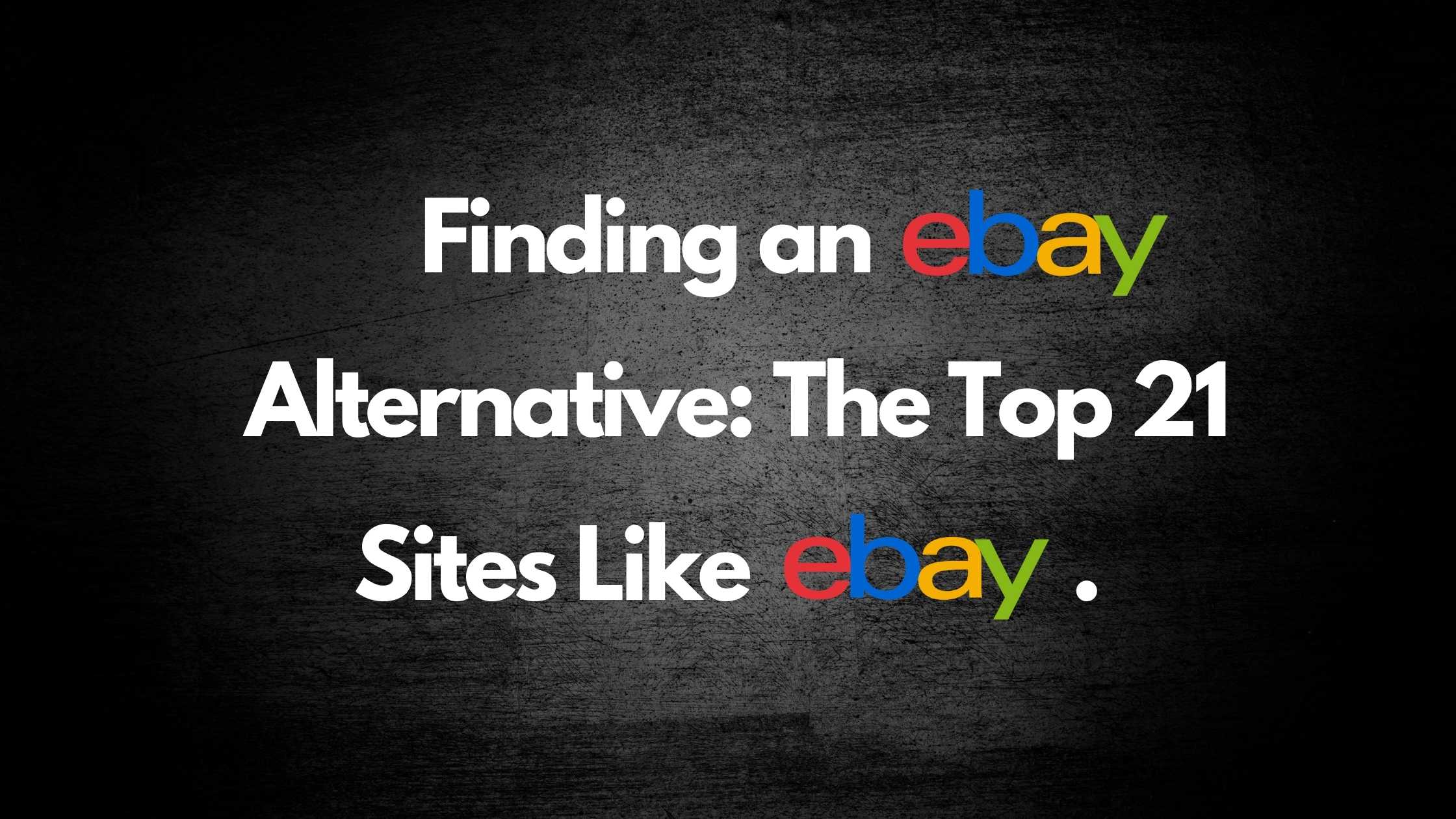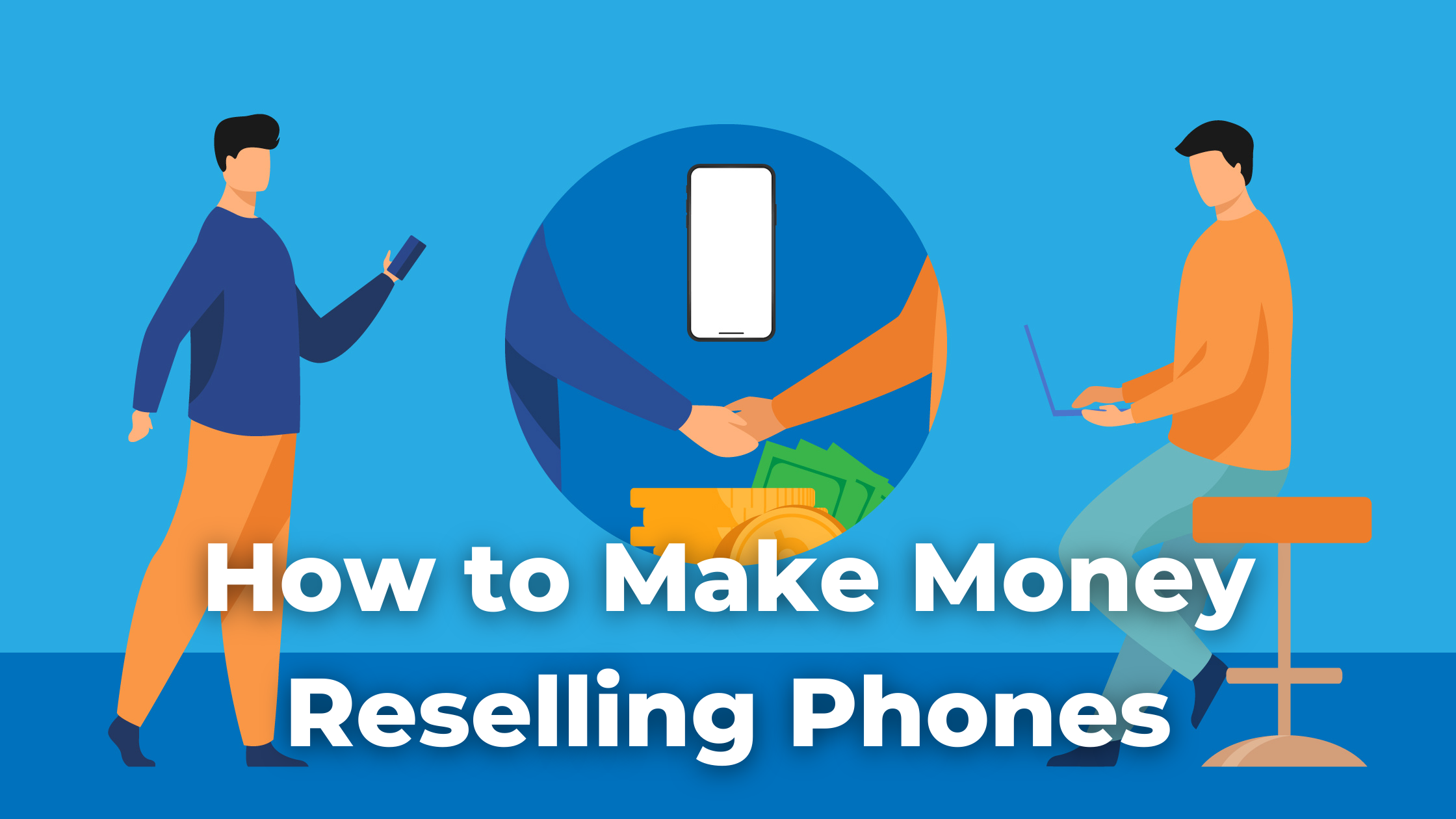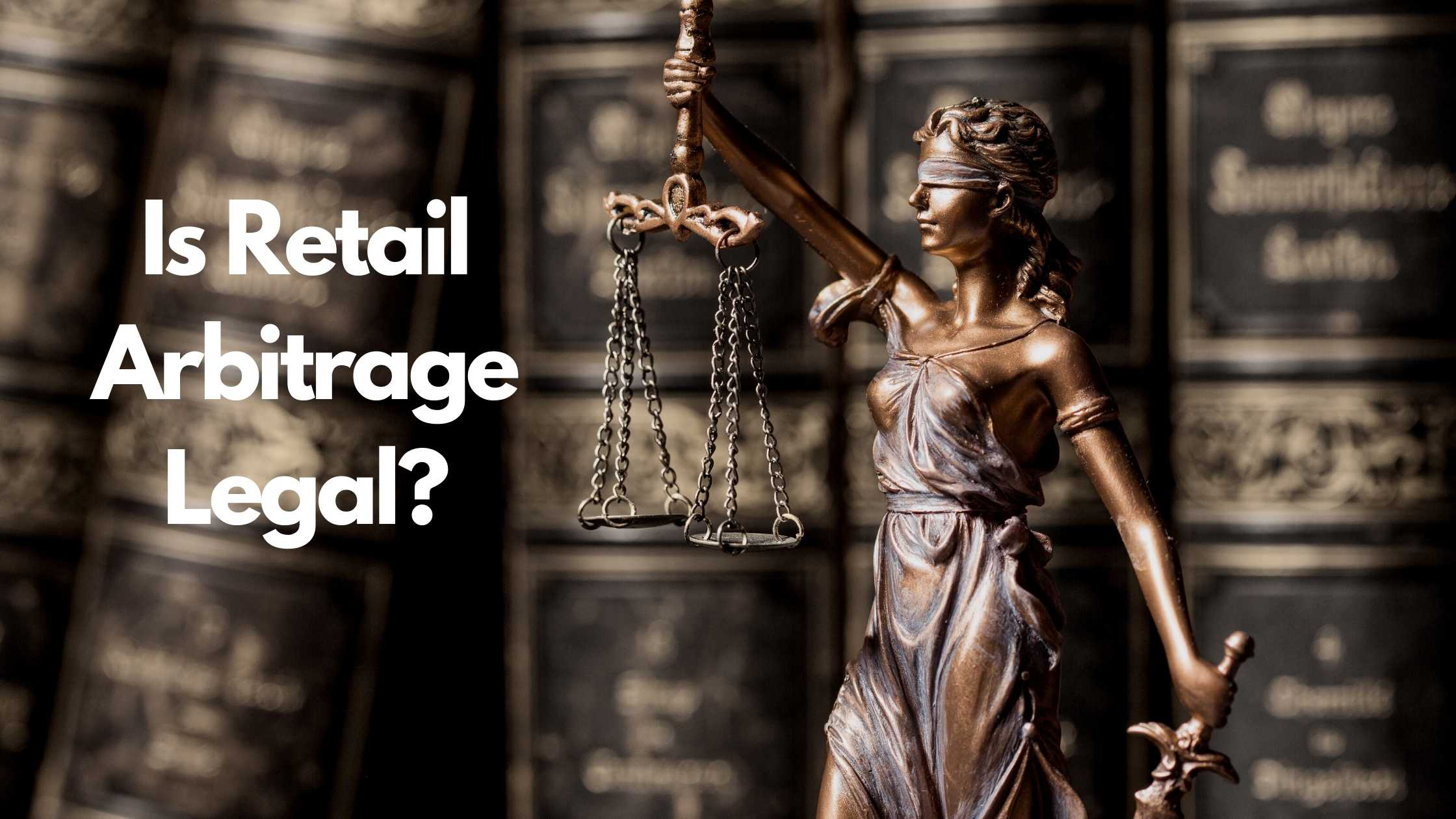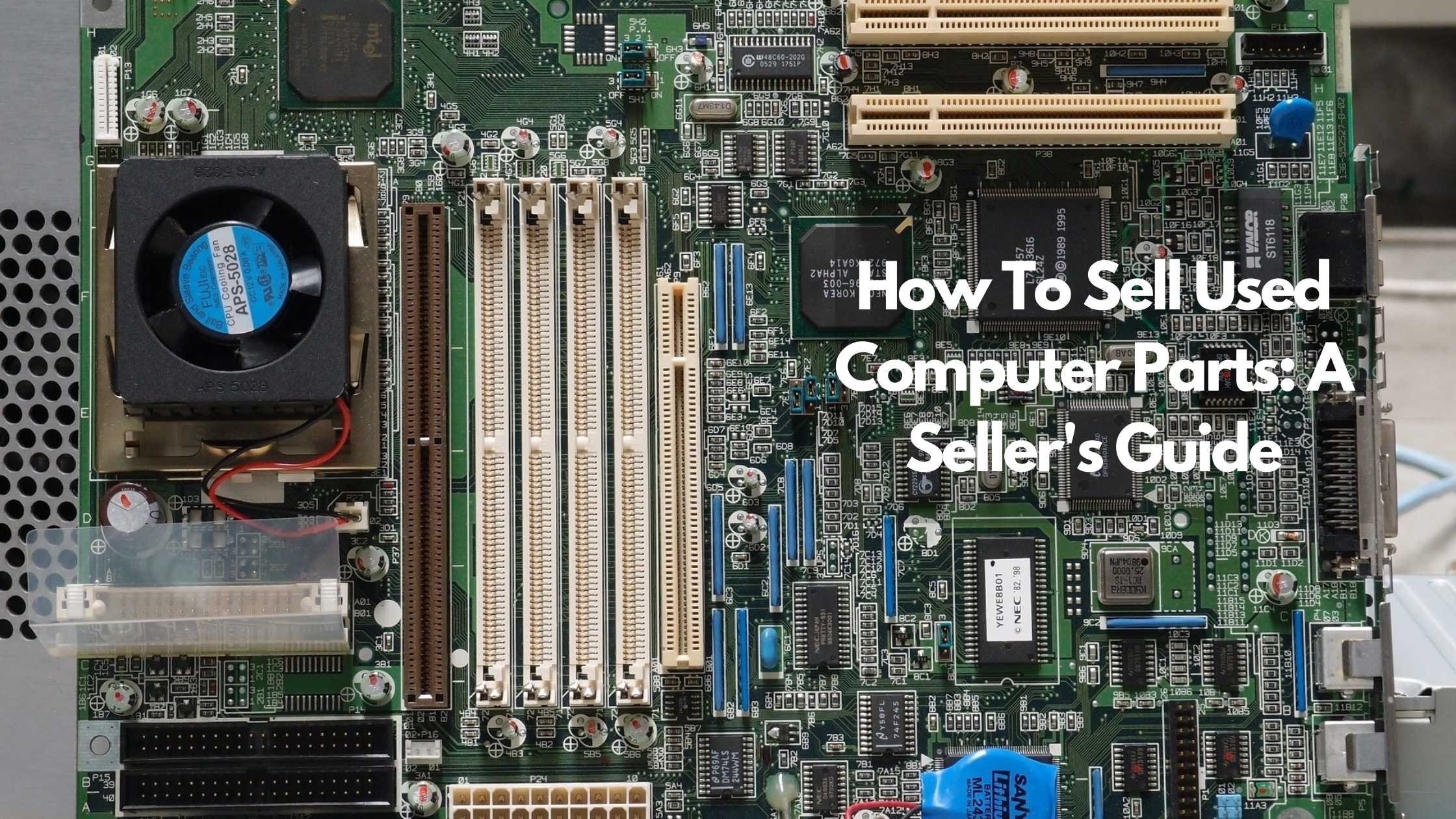
Flipping Phones for Profit: The Ultimate Guide

Listen, now is a better time than ever to look into making your own income.
Whether you’d like to add on a bit of side cash or make a full-time living on your own, practically anyone with access to the internet can make a decent amount with not all that high of an investment.
This isn’t some get-rich-quick scheme either. Today, we’re going to cover exactly how you can start flipping phones for a handsome profit.
You could even get started as quickly as today.
In this article, we’ll be covering:
- What is Phone Flipping?
- Is Phone Flipping Worth it?
- How to Get started
- Where to Find Phones Worth Reselling
- The Phone Inspection Checklist
- The Best Place to Sell Phones Online
- How to Make a Good Listing
- How to Ship Phones — The Safest Way
- Is Reselling Phones Illegal?
What is Phone Flipping?
Cell phone flipping is a form of “arbitrage,” or to put it simply:
It’s buying something, and then selling that same thing for a profit — and in this case, those things are cell phones.
See, with many people moving to make side (or full-time) incomes online, arbitrage is quickly becoming more and more popular.
But not all forms of it are created equal; some undeniably stand on top of the rest.
So that begs the question, do cell phones fill that spot?
Is Phone Flipping Worth It?
The short answer — Absolutely
In 2020, over 1.5 billion cell phones were sold.
But let’s take a deeper dive into exactly why phones are a great product to flip.
So, when you’re looking for a product that’s got great flipping-potential, there are a few critical things to factor in; among those things are these big three:
Size:
The bigger the product you’re flipping, the more complicated things get all around. For one, shipping will be a massive pain in the rear if you’re trying to flip washing machine-sized products.
And that’s not to mention the storage space you’ll need.
While there are exceptions, you’ll generally want to stay away from large products if you want to get into flipping. There’s just too much hassle and not enough payoff given the alternatives.
Demand:
Demand fits into two categories:
Either a product that people most definitely need, or that collectors most definitely want.
The reason for this is that you don’t want to sit on a product for too long, else your capital’s just going to waste. For instance, antique books might not be a necessity in everyday life, but collectors are often willing to pay a pretty penny.
On the other hand, appliances and devices — like cell phones, for instance — are a significant part of almost everyone’s daily lives.
Since everyone needs a cell phone, it shouldn’t be hard to keep a constant flow of products moving off your shelves, especially if you know the right phones to look for and places to sell them.
Cost:
Again, there’s not just one right way to approach cost, but you’ll generally fall between two methods.
Either you’re going to be selling low-cost items at a high volume or flipping a much lower volume of product for higher prices.
The benefit of the low-cost approach?
Well, it’s generally easier to get someone to buy a cheaper item. However, that also means a lot more legwork when it comes to logistics.
Whereas if you choose an item with a higher price tag, you don’t need to move as much product to make a good profit.
Or to give a simplified example:
You can either try and sell 80 cell phone cases for $5 each, or one cell phone for $400.
For many (probably most) people, the latter option is preferable, even if it’s a bit harder to move a phone off the shelves than a few cell phone cases.
Now with all of those factors considered, we think cell phones are one of the perfect items to flip.
- They’re small and easy to store or ship.
- They generally have high price tags.
- And everyone needs a cell phone in the modern age, so they’re one of the easier products to sell.
So if you’re sold on the idea of selling phones, let’s get into exactly how you can start now. (Yes, now.)
How to Get Started Today
The biggest hurdle to highly-profitable phone flipping is experience.
And the only way to get experience?
Start flipping.
Once you’ve got the basics down, the best way to learn is by doing. So let’s go over the things you’ll need to know before you start searching.
Starting with places to find phones in the first place:
Where to Find Phones Worth Reselling — Online & Offline
This can be a tricky one. Often, you’ll find phones selling for prices that make it hard to drive a profit. But if you know where to look, you’ll speed up the buying process significantly.
Here’s one thing to note:
If possible, always inspect the phone personally before you buy it. There’s no way to know for sure about a sketchy charging port or a sticky button unless you examine the phone yourself.
Which is why entirely online purchases shouldn’t be your go-to. If you see a great deal on some marketplace, it’s up to you whether you’d like to take the risk, but always try and see the phone for yourself beforehand.
Which leads us to the main places you should look for your phones:
Local online marketplaces and trading groups.
Think Facebook marketplace, for instance.
The reason for this is that any national or global sellers are likely selling the phones for their actual value, effectively doing the same thing that you’re doing.
When you search local, though, you’ll find plenty of people trying to get rid of phones for less-than-market prices.
Just a quick search for Facebook groups should bring up plenty of groups in your area.
Staying Safe while Buying Phones Locally
Another critical practice when buying locally is being safe.
Never meet anyone in a private place to buy a phone. Always pick somewhere public and in populated areas to meet the seller.
And once you’ve met, it’s time to inspect the phone. So let’s go through the checklist quickly, so you know what you’re looking for.
The Phone Inspection Checklist — Do This Before Buying
So as we’ve stated before, there’s no point buying a phone if it’s not in any condition to sell.
Because while there are places to sell damaged phones online, we’re looking to make a profit, not a tiny bit of pocket change. So before you go through with purchasing the phone, here are some essentials to check for.
IMEI Number — Is the Phone Clean?
One of the most important pieces to it all — the IMEI number
But why is the IMEI so important anyway?
Well, checking the IMEI number will tell you whether or not the phone you’re dealing with is “clean.” A clean phone is just one in good standing with its carrier.
If a phone gets reported stolen, lost, or the original purchaser doesn’t keep up with the payments, the phone carrier can “blacklist” the phone — which effectively renders it useless with most carriers.
Finding out whether a phone is clean or not is pretty easy, though.
How to check a phone’s IMEI number
- First, dial *#06# into your phone app.
- Copy the number that shows up in the “IMEI” space.
- Next, find an IMEI checker online. This one works well.
- Paste the IMEI in and do a blacklist check.
If the phone shows up “Clean,” you’re in the clear. If it’s not, time to move on. You can also get quite a bit of info on the phone itself through these checkers, but the main thing we’re looking for is a clean phone in good standing.
Once we’ve established that the phone is clean, it’s time to move on to the rest of our inspection.
IMEI Checkers are free and easy to come by.
Screen Check
A screen in bad condition can be fixed, but it’s generally not a good use of your time unless that’s already your specialty.
Phones are getting harder to work with, and for the vast majority of people, you’d be better spending your energy looking for a phone that needs minimal to no work.
Check for the visible cracks, and while a few small scuffs may be acceptable, what we’re looking for a screen in near-pristine condition. Any cracks or a load of scratches will significantly decrease the value, so stay away from them.
Speakers & Microphone
Next are two things we can check relatively quickly — the sound output and input.
To check the microphone on a phone is pretty simple.
If it’s an Android phone, say: “Ok, Google,” into the microphone. If the assistant responds, the microphone is probably working well.
If it’s Apple, do the same, but say “Hey Siri,” instead.
Note: Make sure the voice assistant is on when you’re trying these.
To check the speaker, you’ll want to play a few songs through Youtube or the music app. It’s pretty easy to judge whether the speakers are working fine, so we won’t go too in-depth here.
Again, if the speakers sound off, or the microphone isn’t working, you may want to move on to the next.
Camera Quality
Next is the camera quality.
While it may not seem like a huge deal to some, cameras are becoming one of the most important parts of smartphones for plenty of users. So always be sure to do a quick camera quality check.
Now, this doesn’t mean every phone you flip has to be 4K quality, pristine photos. If you’re buying a $50 phone, it’s not going to be anything spectacular.
What we’re really talking about are any defects.
Does the camera appear to be working as it should? Or are there obvious problems with the quality?
Again, if there are any standout issues, it’s probably best to pass up the phone.
Buttons
The button quality isn’t going to be evident by just looking at the phone. So play around with it for a few.
Check the screen responsiveness, click the volume and power buttons a bit, and get a feel for how the phone works.
If the buttons are sticking and jamming, or the screen isn’t as responsive as it should be, that’s a definite red flag.
Battery Health
Battery health is something that’s going to need a bit more background knowledge. This is because different phones are going to have different batteries and usage amounts.
But until you’ve got some experience, you can always do a quick search of “*phone model *’s battery life” on Google.
Now, you obviously won’t be able to sit for 10 hours to check, but you can go into the settings and look at the battery section. Does it seem to be using power faster than it should?
A used phone isn’t going to have a factory new battery, but if you notice an unexplained massive difference between how it should be and how it is, you’re probably dealing with a bad battery.
Charging Port & Others
For this one, it helps to carry a universal charger. (One with a micro-USB, a USB Type-C, and an Apple charging cable altogether)
That way, you can check whether or not the charging port is working as intended.
Just do a quick plug-in and see how the phone chargers (if it charges at all.)
If it’s charging at a normal pace, you’re golden. If not, there’s little you can do to make the phone worthwhile, so time to move on.
Wifi & Bluetooth
Again, it helps to bring some of your own equipment to check for these.
For wifi, it’s as simple as using your phone to put out a hotspot. Then, just see if the phone in question can connect.
For Bluetooth, try bringing a wireless headset or speaker and see how the phone connects.
Both wifi and Bluetooth are vital to most smartphone users, so no free passes in this section.
Overall Condition
And next is relatively easy to tell from a glance. How does the phone appear overall? Is the main body of it beat up? Does it have dents and scratches?
The phone doesn’t need to look like it’s fresh out of the box (though that’d be preferable); just make sure it’s in good condition, and you should be fine.
Average Selling Price
Now here’s something that you probably want to know before you go to buy the phone:
The Average Selling Price.
Before you spend all the time to set up a meeting, inspect the phone, buy it, and then create a listing, you’ve got to make sure that it’s worth selling in the first place.
If you’re only going to make $10 on the phone after the sale, is it really worth your time and energy? (hint: probably not)
So once you’ve found out what the seller is asking, do a quick search on some online marketplaces. You could check eBay, Amazon, or even Sheepbuy for prices to compare.
Tip: Make sure you’re looking at phones that have sold when filtering results. Anyone can list an old phone for $1000, that doesn’t mean it’s going to sell.
Don’t assume you’re going to sell it for the max price, either. Try and get an idea of the average sale price, and if anything, lean towards the lower side so you can be pleasantly surprised.
We can’t tell you what your lowest acceptable margin is, but try to set one and stick to it.
Once you’ve decided the phone is worth the hassle, it’s go time.
Best Place to Sell Phones Online for the Most Profit
Once everything else is in motion, you’ll need a place to sell your products. So, where is the best place to do it?
Well, there are Amazon and eBay, but they’re fairly saturated and take a decent chunk out of your profits.
Which is why we recommend Sheepbuy. Sheepbuy doesn’t take a percentage off your sales, there’s less competition, and you’ve got a bit more control over the whole process.
Do you really want to compete with all of these listings? (The list doesn’t stop at just page 13, by the way.)
How to Make a Good Listing
A good listing that sells will have a few key parts:
- An Accurate Description: If you are selling phones with any defects, make sure to list them. The last thing you want is a disappointed customer and/or a return.
- Great Pictures: Again, make sure your pics are of high quality. One of the biggest differences between the listings that do and don’t sell is the pics. Make sure they’re clear, high definition, and accurate.
- Good Reviews: While not part of the listing perse, do everything you can to ensure great reviews from your customers. Those first few reviews are going to make a world of difference. If you get bad reviews, it’s going to hamper your ability to sell in the future, and great reviews are only going to make it easier.
An example of a not-so-great picture
How to Ship Phones — The Safest Way
Shipping is another part of the process that’ll make or break you.
If you’re not careful, it’s likely that you’ll be seeing lots of complaints and returns. So here’s a quick checklist to ensure everything gets to the customer safe.
- First, use a Ziploc bag or two to keep out moisture.
- Next, wrap the phone in multiple layers of bubble wrap.
- Make sure you’ve padded out any extra space in the box with foam or newspaper. The last thing you want is for it to move around in transit.
- And lastly, once it’s in the box, don’t skimp out on tape. Make sure it’s secure.
As for the shipping, USPS is probably best, and always:
- Use signature confirmation.
- Get Insurance your package.
- And get a tracking number.
Do all of those things, and your packages should get where they’re going with little to no problems.
Is Reselling iPhones Illegal?
Short answer: No
Long answer: It depends.
Selling property you own is perfectly legal, so if you own the iPhone, selling it is fine.
What’s a bit more sketchy is selling phones that haven’t been paid off. Which is exactly why we implement the IMEI check in the inspection.
If the phone is paid off, you’ll be okay. Just don’t sell phones that are blacklisted or unpaid in full.
Conclusion
So now, you’ve got the knowledge to get started with phone flipping.
The next step?
Getting started.
To get super profitable with your phone flipping endeavor, you’ve got to build experience. And the only way to do that is by actually flipping.
So what’s stopping you? Get started today and get flipping.
(By the way, did we mention that you could get started on Sheepbuy for free, with no commissions? It’s a pretty great way to get your feet wet, if we do say so ourselves.)
TRENDING


Online Arbitrage for Beginners (Step-by-Step Guide)

17 Types of Arbitrage Strategies to Turn a Profit

Is Retail Arbitrage Legal?

How to Turn Textbook Arbitrage into a Business for Profit

How Can You Tell if a Book is a First Edition?

What to Do With Your Jigsaw Puzzle When Finished?

